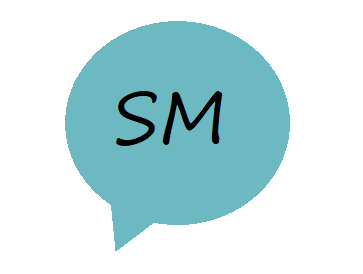Introduction to Visual Literacy
In an age where images, graphics, and visual mediums dominate our daily interactions, the ability to "read" and "write" using visuals becomes as critical as traditional literacy skills.
Enter visual literacy—a skill set that equips individuals to interpret, understand, and produce visual messages. In essence, visual literacy is not just about seeing but understanding and interacting with the visual world around us.
Visual literacy emerged as a recognized form of literacy in the 1960s, but its roots can be traced back to ancient civilizations that communicated primarily through visual symbols, from cave paintings to hieroglyphics. The power of visuals has always been evident; they can convey complex emotions, narratives, and data in an immediate and universally accessible manner.
Visual content transcends linguistic and cultural boundaries, often providing a universally recognizable mode of communication. For instance, the symbols used in road signs or the icons on your smartphone are immediately identifiable, regardless of one's primary language.
But visual literacy goes beyond mere recognition. It involves a deeper understanding of why certain visuals work the way they do, how they're composed, what emotions they evoke, and what biases or perspectives they might reflect.
At its core, visual literacy encompasses a variety of skills:
- Observation: Just as reading requires understanding words, visual literacy begins with observing and recognizing visual elements, from colors and shapes to balance and contrast.
- Interpretation: This skill involves deriving meaning from visuals. Why is the sky painted red in a particular painting? What does a specific chart convey about sales trends?
- Critical Thinking: Like textual content, visuals can also have biases, manipulations, or errors. The ability to critically analyze visuals ensures one isn't easily misled by them.
- Production: This involves creating visuals that effectively convey the intended message. It's about choosing the right type of chart, the right colors, or the right visual representation to suit your audience and purpose.
The digital age has amplified the importance of visual literacy. With platforms like Instagram, TikTok, and Pinterest, we're not just consumers but also producers of visual content.
Moreover, in the professional realm, from business presentations to academic research, the ability to present information visually is invaluable. Infographics, data visualization, and multimedia presentations are indispensable tools in today's communication toolkit.
Furthermore, the onslaught of information in the digital age, often termed "information overload", means that individuals need skills to filter, interpret, and critically evaluate the visual content they consume.
From recognizing the manipulations in a photoshopped image to understanding the nuances of a political cartoon, visual literacy provides the tools to navigate the visual landscape with discernment and understanding.
However, as with any form of literacy, challenges abound. In an era of "deep fakes" and digital manipulations, how do we discern reality from fabrication?
As visuals become tools of persuasion in marketing, media, and even misinformation campaigns, the lines between objective representation and biased portrayal can blur.
Education systems globally are recognizing these challenges and the importance of visual literacy. From early education art classes that introduce children to basic visual concepts to higher education courses on media studies, film analysis, and graphic design, the emphasis is clear: to be an informed, critical, and effective communicator in the 21st century, one must be visually literate.
Visual literacy is no longer a supplementary skill but a necessity. As the adage goes, "A picture is worth a thousand words," but only if we possess the skills to understand and interpret those words accurately.
As we continue to evolve in a visually dominated age, our ability to communicate, understand, and create using visuals will shape not just our personal interactions but the broader narratives of society.
Key Points
Definition: Visual literacy refers to the ability to interpret, negotiate, and make meaning from visual content, such as images, videos, symbols, and graphics.
Interdisciplinary Nature: It encompasses understanding art, design, culture, and technology, melding both interpretative and technical skills.
Digital Age Relevance: With the rise of digital media, visuals dominate communication, making visual literacy increasingly essential.
Technical Aspects: Visual literacy extends beyond interpretation to include technical proficiencies like image editing, graphic design, and multimedia production.
Critical Thinking: It equips individuals to critically evaluate visual content, discerning authenticity, biases, and underlying messages.
Benefits
Enhanced Comprehension: Visuals can simplify complex information, aiding in better understanding and retention.
Effective Communication: Visual literacy skills enable individuals to convey ideas and emotions compellingly and succinctly through visual means.
Critical Media Consumption: It fosters the ability to critically evaluate and authenticate visual content, protecting individuals from misinformation.
Cross-Cultural Understanding: Since visuals often transcend language barriers, visual literacy promotes understanding and empathy across cultures.
Job Preparedness: Many modern professions require visual literacy skills, from marketing and design to data analysis and digital content creation.
Empowered Creativity: Understanding visual principles and technical tools empowers individuals to create and express through various visual mediums.
Engaged Learning: In educational settings, visual literacy can make learning more interactive, engaging, and memorable.
In essence, visual literacy is a foundational skill in our visually-driven world, offering both practical and cognitive benefits. It enhances understanding, fosters critical thinking, empowers communication, and enriches personal and societal interactions.
Consistently honing and expanding our visual literacy skills is crucial in today's visually-saturated digital landscape. By actively practicing and exploring these abilities, we not only enhance our communication and comprehension but also navigate the world with a more critical and informed eye.
